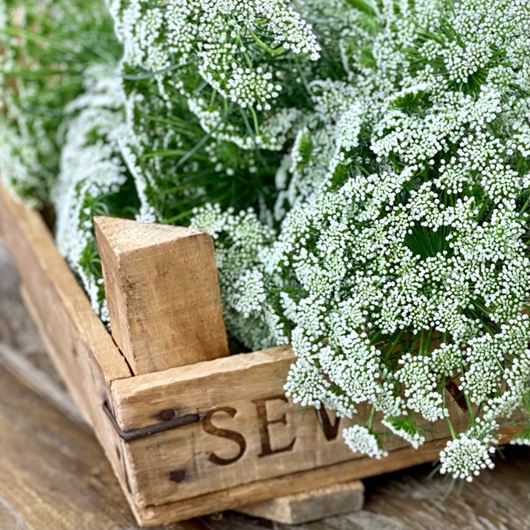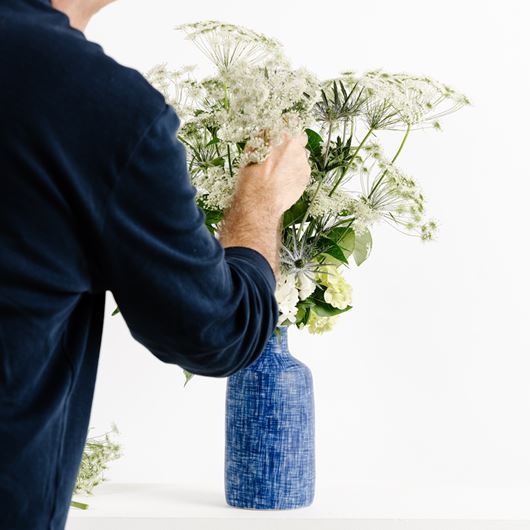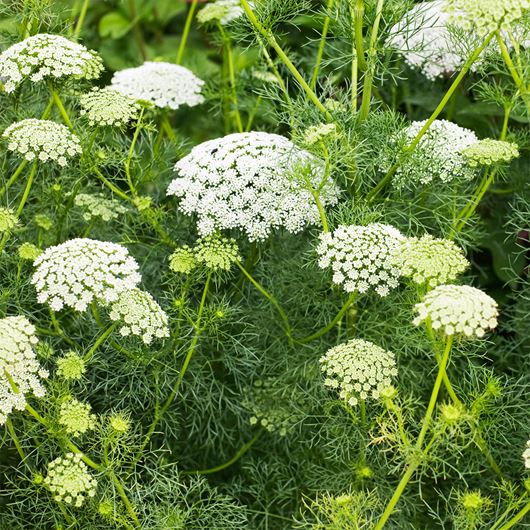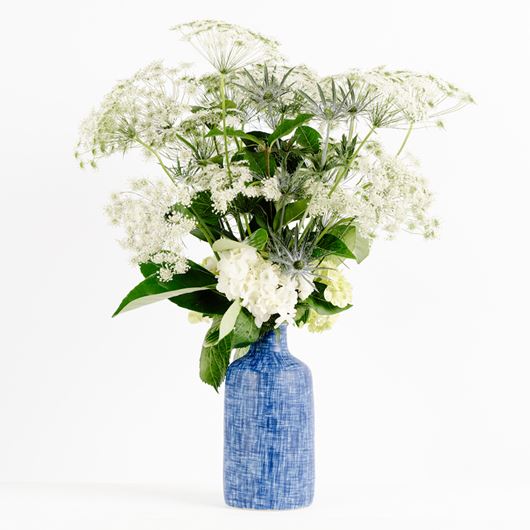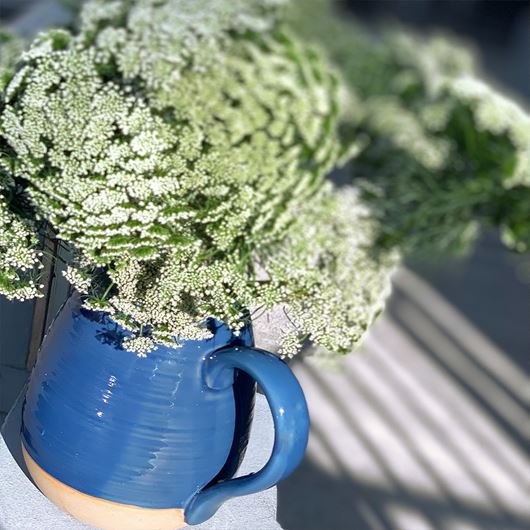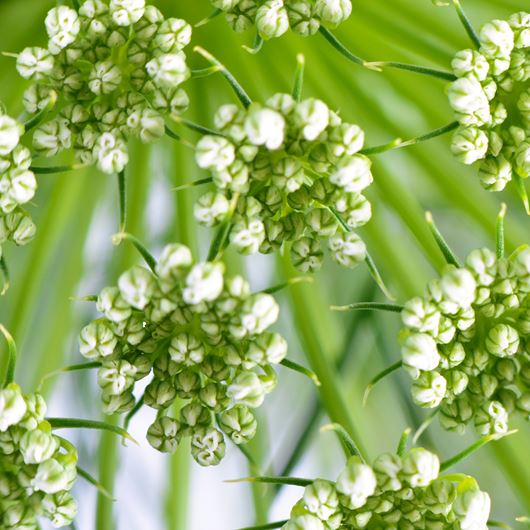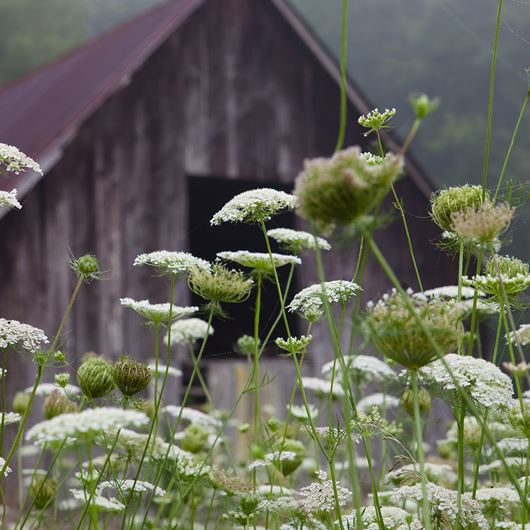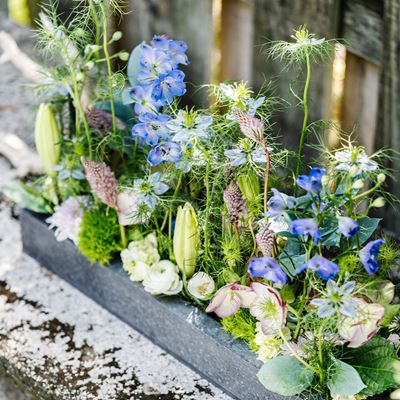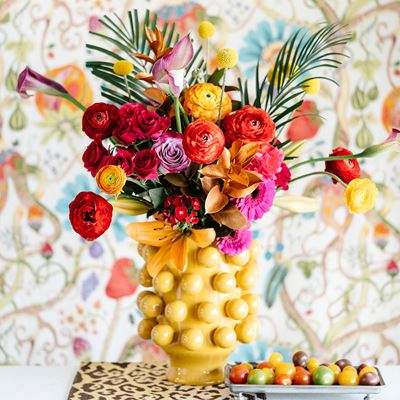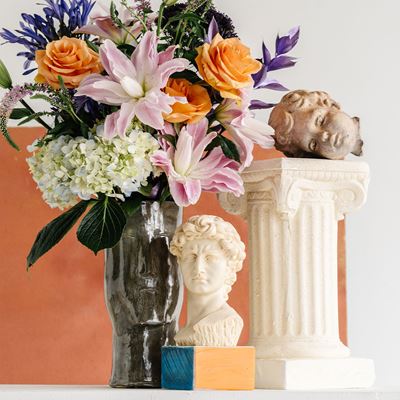Completing our 2023 lookbook series, our sixth and final trend, ATMOSPHERIC, pays homage to our planet's habitats at large. This trending macro view gathers an immersive palette of cool hues, borrowed from the oceans and forests, and pairs it with glowing bright white.
From Nature's Bronzer to Wedding Filler Favorite: Explore the Curious Past of Ammi Majus (And Its More "Royal" Lookalike)
It may not be a true "royal," but there's no denying this flower's regal appeal. Coveted by designers for its delicate and airy, lace-like looks, Ammi comprises a group of herbaceous perennials (or sometimes biennials) that are oftentimes mistaken for their more "royal" cousin, Daucus carota (or Queen Anne's Lace). Since their flowers look almost identical, Ammi is commonly referred to as false Queen Anne's Lace—but there's nothing false about this plant's beauty and inviting charm.
Endemic to Egypt's Nile River Valley, the Mediterranean, and Southwest Asia, the Ammi genus includes about seven species of flowering herbs that are members of the Apiaceae (carrot) family. Most cultivars used by designers today are derived from Ammi majus, whose origins trace back to around 2,000 B.C. Historically, Ammi has been used by ancient Egyptian caravan travelers who used the plants as a natural bronzer of sorts. Its roots contain 8-methoxypsoralen, a compound with pigment producing properties. By chewing on these roots, travelers had an easy and inexpensive source of protection against the sun's harsh UV rays.
These medicinal applications carried over into the 13th century, where vitiligo (a condition that causes loss of skin color in blotches) was treated with Ammi seeds. Given their high concentration of furanocoumarins, Ammi seeds are beneficial for treating skin-related ailments like psoriasis, eczema, alopecia and, of course, vitiligo. Ground-up seeds were also utilized in the production of contraceptives and were found in tonics that could alleviate tooth and chest pain, along with urinary infections. They can even be used as an aromatic spice! Given this versatility, Ammi remains a popular ingredient in contemporary herbal medicines and cuisine, especially in India.
Today, Ammi is distinguished mostly by its commercial uses, specifically as a cut flower and garden ornamental. The two most popular species cultivated for the cut flower trade are A. majus and A. visnaga. These wildflower-like plants feature multi-branched stems that grow between 90–120 cm in height and are topped with large, dome-shaped umbels. These umbels (between 7–15 cm in diameter) are densely packed with small, pure white (or sometimes green) flowers that mimic lace from a distance. (Hence the common names lace flower and white lace flower.) These blossoms may sometimes produce a faint, yet unpleasant scent. On the other hand, its attractive, feathery foliage contributes to the plant's overall airy look, making it an excellent filler flower for garden-style arrangements and wedding designs.
As we mentioned earlier, Ammi is oftentimes mistaken for the real Queen Anne's Lace, or Daucus carota. It makes sense, too, since their flowers are almost mirror copies of one other. They are also members of the same carrot family. However, one can tell these "cousins" apart by their coloration. Ammi flowers are pure white and they don't feature the dark central dot seen on Queen Anne's lace flowers. Ammi is also more delicate and less weedy; in fact, many biennial species of Queen Anne's lace have been listed as invasive by the U.S. Department of Agriculture.
Among contemporary designers, Ammi remains a coveted accent flower for its versatility and overt good looks. Like Gypsophila, it adds soft yet full volume to wedding bouquets and spring/summer arrangements. Its ethereal flowers also combine effortlessly with virtually all color palettes and arrange beautifully with large-headed flowers, including roses, lilies and peonies.
FUN FACTS
• Ammi's genus name comes from the Greek word "ammos" meaning sand. This likely references the plant's origins in the Nile Delta and the Mediterranean, where it thrives in warm and dry (or semi-dry) areas.
• Of the six known species of the Ammi genus, the two species most cultivated for the cut flower trade are A. majus and A. visnaga. The most widely known cultivar of A. majus is 'Green Mist', which as its name suggests, produces green flowers.
• Some Ammi flowers may produce a scent, which although faint, is said by many to be unpleasant.
• Given their origins in Egypt, Ammi was used by ancient Egyptians in herbal tonics to treat urinary infections, which were common during the time period. Today, the plant's dried stems are used as toothpicks and sold in Middle Eastern markets.
• When handing Ammi—especially if you're coming into contact with the plant's sap—proceed with some caution. Its sap contains phototoxic compounds that can cause photosensitivity or dermatitis.
• Aside from its ornamental and medicinal uses, Ammi was also grown as a food source given its edible leaves. In India, it is commonly used as an aromatic spice, which is said to taste like thyme.
• Ammi is a member of the Apiaceae (carrot) family, and its common relatives include fennel, parsley and dill. For this reason, its leaves sometimes give off a carrot-like scent when they are crushed.
• In 2014, Ammi was awarded the Award of Garden Merit (AGM) by the U.K.'s Royal Horticultural Society.
• Ammi flowers are said to symbolize sanctuary and warmth.
• Ammi flowers can be air dried for up to three weeks in a dark, well-ventilated area.
